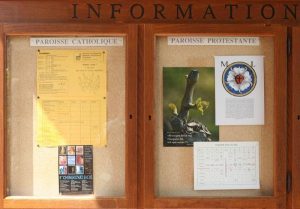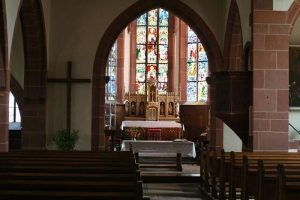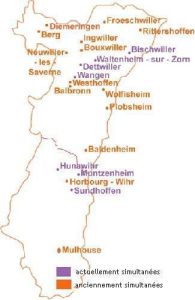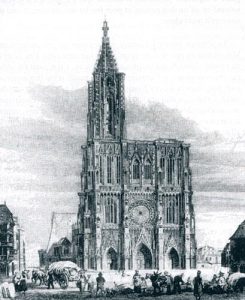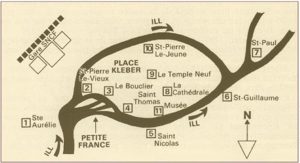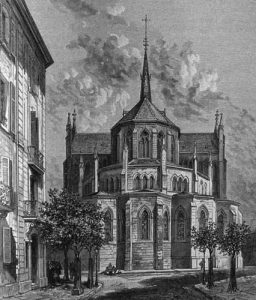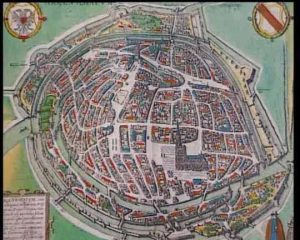Alsatian history explains how the simultaneum was created
After the Reformation was introduced in 1500-1530, areas were defined almost homogeneously according to the principle ‘’cujus regio, ejus religio’ (whose realm, their religion). But in some regions minorities remained, be they Catholic or Lutheran. As they did not threaten the prevailing religion, the Diet of Augsbourg ensured equal rights to the different communities. In some villages, however, frictions arose mainly about who was granted the actual church: in a spirit of harmony, the idea of sharing a church building was accepted.
In 1648, the Treaty of Westphalia put an end to the Thirty-year War and the surrender of Strasbourg that followed in 1681 turned the whole Alsace region into a French region, and Alsatian Protestants kept their religious rights. But the Revocation of the Edict of Nantes in 1685 (though the 1598 Edict did not apply to Alsatian territory that did not belong to the Kingdon of France at the time) brought about a forceful policy. Though it was not as severely implemented as in other French regions, Louis XIV wanted to weaken the large Protestant minority: establishing the simultaneum and compelling its implementation in every Protestant village, where at least 7 Catholic families lived, was a means of achieving that.
The organisation of the simultaneum
In churches the choir was generally devoted to Catholic worship and the nave to Protestant worship. The King wished that Protestant altars should not stand in the middle of the church and face the Catholic altars, the former were installed and then removed after each Lutheran worship. More rarely the sharing was decided according to temporal criteria, days and times of worship were then rescheduled.
One example is the Saint-James the Greater parish church in Hunawihr where the simultaneum has endured since 1687.
The conflicts between the two communities
There were numerous conflicts between the Catholic and Protestant communities, and the evolution of religious buildings was often chaotic. Just to name a few:
Baldenheim: a simultaneum was initiated in the Protestant church of the village. In 1792 the Protestants took over the choir closed off with a curtain and a balustrade. In 1843 the conflict reached its peak, as the curate had unauthorised work done. The Catholics had to leave the church in 1938.
Plobsheim: The Saint Peter and Paul church experienced the simultaneum from 1685 to 1898. The Catholics used the church on opening days from 6:00 to 8:00 and then from 12:00 to 14:00, and the curate and the pastor had to agree on the remainder of the day. Many frictions occurred because the church was big enough for the Catholics but too small for the Protestants. The problem was also present in other mixed churches. In 1891 a Catholic Church was meant to be built, but never was for the lack of compensation. The simultaneum ended after a temple was erected in 1897.
Wolfisheim: In 1525, when the Reformation was introduced, the building erected in 1492 was left to the Protestants until 1559 and given back to the Catholics by the Duke of Deux-Ponts. Then in 1570 it became Protestant again by the ruling of the Dukes of Hanaau-Lichtenberg. It was used under the simultaneum system until a Catholic church was built.
The 1802 Organic Articles provided for the abolition of this often conflictual system. But the law was not implemented by the State who refused to pay for new buildings in potentially more than 150 villages (most of them in the Bas-Rhin). So the State relied on the Churches to solve the problem. Towards the end of the 19th century in German Alsace, many parish churches were built, which accounts for the landscape featuring ‘villages with two steeples’.
Presently about fifty churches in Alsace use the simultaneum system, mainly in Bas-Rhin: they are mostly Lutheran or Reformed churches infrequently housing Catholic worship.

